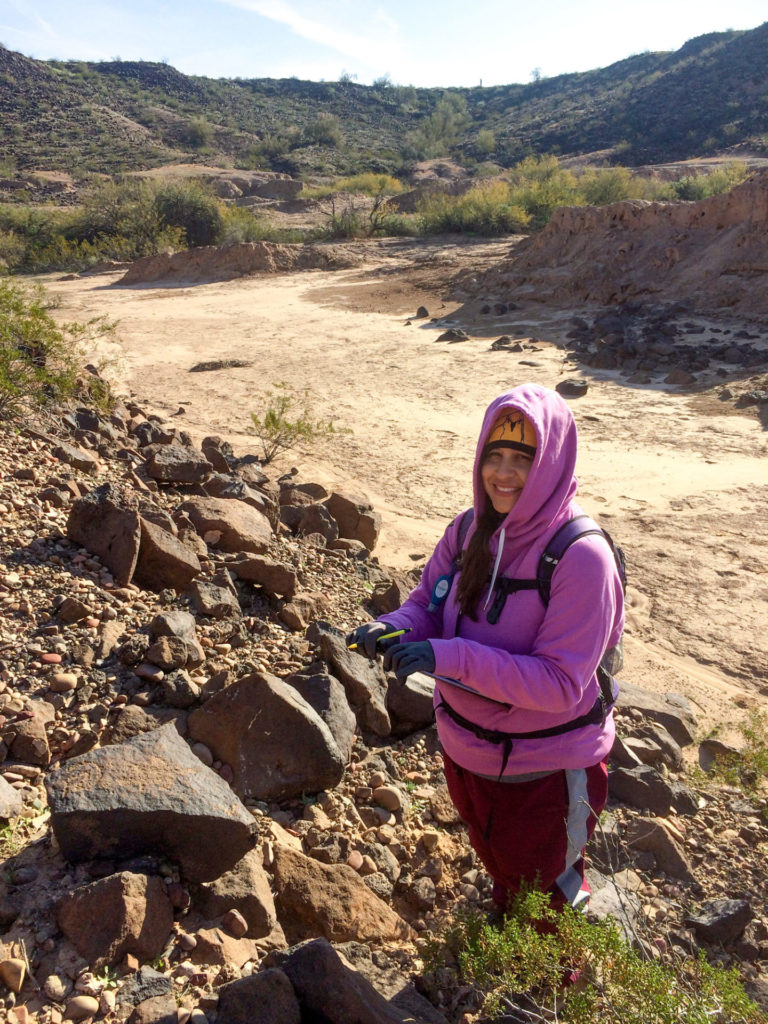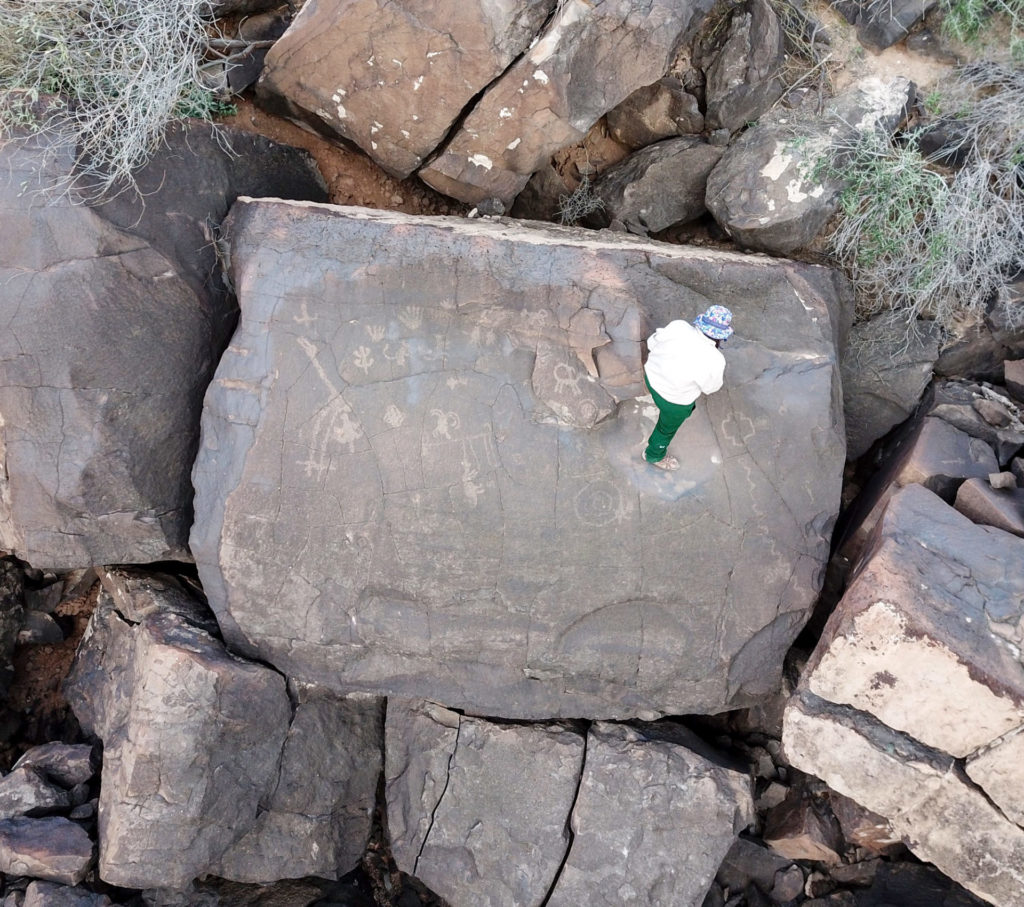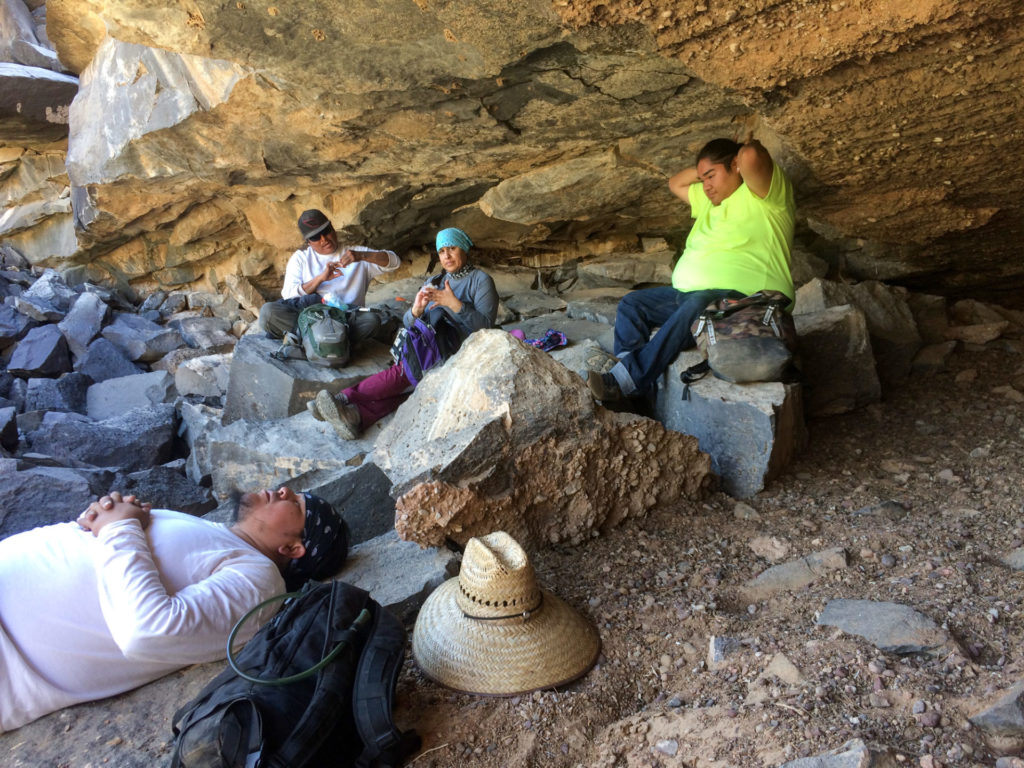- Home
- >
- Preservation Archaeology Blog
- >
- Focus on the Field Crew: Keahna Owl
(April 10, 2020)—Last week I explained some of the accomplishments we’ve had on the Lower Gila River Ethnographic and Archaeological Project (LGREAP) during the 2019–2020 field season. Those accomplishments aren’t limited to the amount of fieldwork we’ve done. They also include the relationships and comradery that have developed among the crew, as well as the insight I’ve been given into the crew’s lives and their community. Although there is no substitute for actually being in the field with us, our Focus on the Field Crew blog series provides a glimpse of into the inner workings of our small community.
Focus on the Field Crew presents transcriptions of interviews with the 2019–2020 field crew I conducted on March 3 and 4, 2020. In this post, you’ll meet Keahna Owl. Keahna is a member of the Fort Yuma Quechan Indian Tribe, and she has had a lifelong interest in anthropology. In fact, Keahna graduated from American River College in Sacramento, where she earned an associate’s degree in anthropology and business management.

Keahna was working for the Quechan Housing Authority when she learned about the opportunity to participate in LGREAP from a flyer that the Quechan Cultural Committee distributed to the community. She knew the fieldwork would be a big change in her daily routine and would require her to spend a fair amount of time away from her family, but she took on the challenge. And six months later, I believe we are both pleased by her choice and where it has led her.
Aaron: What is your first memory or experience with archaeology?
Keahna: I first learned about archaeology in a cultural anthropology course and that’s when I became interested.
Aaron: How long ago was that?
Keahna: Oh, I’d say about 10 to 15 years ago.
Aaron: Now, did you…we’ve talked before and you have some childhood experiences maybe with your father?
Keahna: Oh yeah, we did artifact hunting. It wasn’t…um, well I guess it was archaeology.
Aaron: In a sense, yeah. That was your earliest experience with any artifacts and, uh, deep history maybe?
Keahna: Yeah. It’s some of my best childhood memories with my dad who would take me out to the desert and teach me about my culture. He would show us how to find artifacts and tell us about them. I have lots of fond memories of doing that as a child.
Aaron: So given that background, what attracted you to this current project?
Keahna: Well, it’s just something that I’ve always wanted to do. I was happy and comfortable in my job as a designated housing authority, but I wanted to go out and do archaeology work. It was always…it was always something I wanted to do. So, I took a chance and went with it.
Aaron: How has your perspective on archaeology changed from when you first began ‘til now?
Keahna: Well, for one, I’ve never worked with an institution…I’d never heard of an organization that respected artifacts in the way that Archaeology Southwest does. You guys log the things and leave it where it is, just as I was taught as a kid. And that was very important to me, so I thought maybe I can do archaeology work and still respect my upbringing at the same time.
Aaron: What do you find to be the most interesting aspect of this project?
Keahna: Coming across new things, like new types of pottery shards, and just seeing the work that was put into petroglyphs and geoglyphs. I’m still trying to wrap my head around the fact that it was done by my ancestors. It’s just kind of weird to think about.
Aaron: How does this project compare with other types of archaeological research you’ve read about or learned about?
Keahna: Well, I think Archaeology Southwest is more respectful toward the cultures that we work with, just in the sense that they respect the fact that we believe artifacts need to be left where they were originally left.
Aaron: What do you see as the value or the long-term benefit of this project?
Keahna: The information that we’re gathering right now, I hope to see it in history books and I’d like to see everybody’s perspectives change on, just how deep our history goes and how complex our trading routes were thousands of years ago.

Aaron: In what ways do you see archaeology contributing to the preservation of Quechan traditions and heritage?
Keahna: For one, it will always give us data to refer to when making an argument in court as to show that this was our land, this is what we did. That the land should be more respected. That the culture should be accepted not just as Quechan history, but as American history. And lands don’t need to be destroyed as they have been.
Aaron: What aspects of Quechan history and tradition are not accessible through archaeology?
Keahna: I would say traditions…traditions passed down through the line…oral histories and language. But even that I’ve come to question because some of the petroglyphs seem to back up some of our songs and oral history.
Aaron: How do you think research and the conservation of archaeological materials contributes to the teaching and preservation of traditional Quechan culture and heritage?
Keahna: When the data come in for the trading routes and the obsidian, we can confirm that we used to trade with these people and we still have a connection to them now, even though there weren’t any vehicles or anything like that back then. We can still…it’s going to be easier for us to maintain these connections with other tribes, and our history is a lot more complex than what even we had originally believed.
Aaron: How does Quechan oral history and the archaeology of the lower Gila River, which is where we’ve been working, how do they compare? Are they compatible, and if so, in what ways?
Keahna: They’re definitely compatible. Some of the petroglyphs have…they have shown to back up some of our songs and oral histories. And it’s not just ours; it’s our sister tribes. And it shows that not only were our ancestors in the areas, that they passed on these stories through our songs and traditions.
Aaron: How well do you think archaeologists and anthropologists, in general, have listened to the concerns and interests of Native communities?
Keahna: Not exactly well. They haven’t done very well in that sense. It seems they want to come and tell us…they want to tell us what our history is and what our artifacts mean. But really they should be working more closely with the tribes and the people themselves to understand these things.
Aaron: Do you believe Native communities should have more of a role in archaeology moving forward and why?
Keahna: I definitely believe that Native communities should have a bigger role in interpreting their own histories and culture because they’ve lived it. They’ve lived the culture and they are just better able to share their worldview. So, Native communities working with archaeologists, they should be able to interpret things better so that everybody understands more and not…so our history is not told from an outsider’s perspective. It should be everybody’s perspective.
Aaron: Is there anything about our fieldwork that we’ve been doing that has fostered in you a closer connection to your tribal history?
Keahna: Yes, when we find an artifact we rebury it. That’s just natural to me. It feels like, after we log something, there’s closure. It’s not going to be taken. It’s not going to be found again. It is where it’s supposed to be after we’ve collected the information we need from it.

Aaron: How would you like to see archaeology carried out in the future?
Keahna: I would like to see them work more closely with Native American communities. And I would like to see them respect Native American archaeology, as in that culture’s definition of what archaeology should be. And don’t take items that aren’t yours. They never were yours. And just because you found them, doesn’t make them yours. This thing with finders-keepers, it doesn’t exist within Native American cultures and it shouldn’t be used in archaeology.
Aaron: Do you envision yourself then continuing in archaeology, whether that be through school or employment?
Keahna: Yes, I’d really like to get involved in cultural resource protection.
Postscript: Since the interview, Keahna has enrolled at Arizona State University to pursue a bachelor’s degree in anthropology. She was also accepted to the 2020 University of Arizona–Archaeology Southwest Preservation Archaeology Field School in Cliff, New Mexico. Although that field school was cancelled as part of the university’s effort to combat the spread of the novel coronavirus, Keahna plans to attend the 2021 field school.
This three-year study was awarded a Collaborative Research Grant from the National Endowment for the Humanities (RZ-255760). The NEH is an independent federal agency created in 1965. It is one of the largest funders of humanities programs in the United States and awards grants to top-rated proposals examined by panels of independent, external reviewers. Any views, findings, conclusions, or recommendations expressed in this study do not necessarily represent those of the National Endowment for the Humanities.
